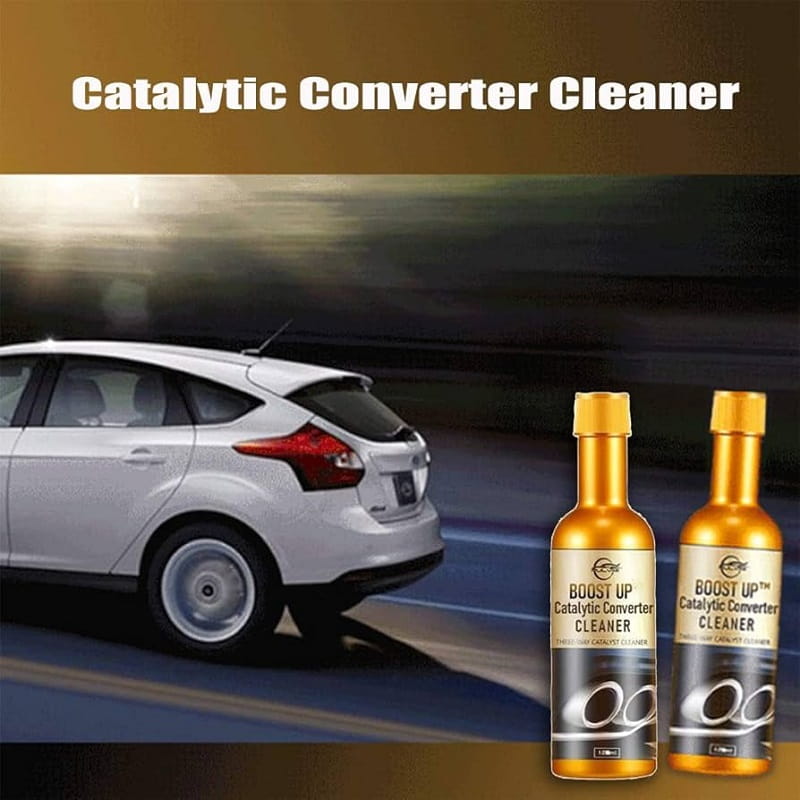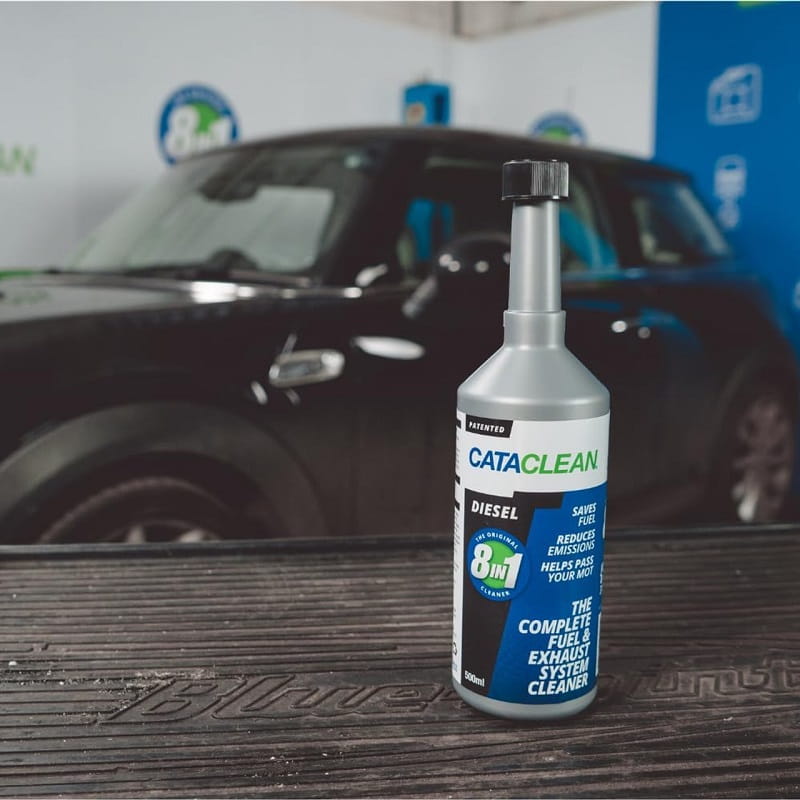This post contains affiliate links. This means I will make a commission at no extra cost to you should you click through and make a purchase [ “As an Amazon Associate, I earn from qualifying purchases.” ]. Read the full disclosure here.
Catalytic Converter Cleaner for Diesel Engines: What You Need to Know GuideMechanic.Com Modern diesel vehicles are powerful, fuel-efficient, and environmentally friendly—when properly maintained. One critical component that ensures diesel engines meet emission standards is the catalytic converter.
However, like all parts of a vehicle, it can become clogged or inefficient over time. That’s where a catalytic converter cleaner for diesel comes in.
In this guide, we’ll explain how catalytic converter cleaners work for diesel engines, when and why you should use them, which products are most effective, and whether they can actually help restore performance and reduce emissions.
See Also: Catalytic Converter Cleaner Near Me: Finding the Best
Catalytic Converter Cleaner for Diesel Engines: What You Need to Know
Understanding

Unlike gasoline engines, diesel engines produce more soot (particulate matter) and nitrogen oxides (NOx) due to their combustion process. To combat these emissions, modern diesel vehicles use complex exhaust treatment systems, which may include:
- Diesel Oxidation Catalyst (DOC)
- Diesel Particulate Filter (DPF)
- Selective Catalytic Reduction (SCR)
- Lean NOx Traps (LNT)
The DOC is essentially the diesel version of a catalytic converter. It oxidizes harmful gases like carbon monoxide and hydrocarbons into less toxic emissions.
However, over time, this component can become clogged with unburned fuel, oil residue, or soot—leading to poor engine performance, increased fuel consumption, and failed emissions tests.
What Is a Catalytic Converter Cleaner for Diesel?
A catalytic converter cleaner for diesel is a fuel additive or engine treatment designed to clean the fuel and exhaust system, including the oxidation catalyst and, in some cases, the DPF and other components. These cleaners work by:
- Removing carbon and soot buildup
- Improving fuel combustion
- Cleaning fuel injectors and combustion chambers
- Restoring flow and efficiency in the exhaust system
They are added to the fuel tank and work as the engine runs—no mechanical disassembly required.
Signs Your Diesel Catalytic Converter May Need Cleaning
Wondering whether a diesel catalytic converter cleaner is necessary? Look for these symptoms:
- Loss of engine power
- Increased fuel consumption
- Rough idling or hard starts
- Check Engine Light with codes related to the catalytic converter or emissions (e.g., P0420, P2002, or DPF-related codes)
- Black smoke from the exhaust
- Failed emissions tests
These signs can indicate clogging or inefficiencies in the DOC, DPF, or other components of the exhaust system.
Can a Cleaner Really Help?

Yes—if the problem is due to buildup (soot, carbon, or unburned fuel), a catalytic converter cleaner can be a low-cost and effective solution. However, if the converter is cracked, melted, or broken, no additive will fix it—you’ll need to replace the part.
- Cleaners are ideal in situations such as:
- Early-stage clogging
- Routine maintenance to prevent buildup
- Preparing for an emissions test
- After using low-quality fuel or after short-trip driving that doesn’t heat the system enough
Best Catalytic Converter Cleaners for Diesel Vehicles
Here are some of the top-rated products that are safe and effective for diesel engines:
1. Cataclean Diesel
This version of the popular Cataclean brand is formulated specifically for diesel engines. It targets the oxidation catalyst, DPF, injectors, and more.
Features:
- Reduces soot and carbon buildup
- Safe for DPF and catalytic converter
- Can help resolve emissions-related fault codes
How to use: Add to 1/4 tank of diesel fuel and drive for 15-30 minutes. Use every 3,000 miles or before an emissions test.
2. Liqui Moly Diesel Catalytic System Cleaner
Liqui Moly is a trusted German brand known for high-quality automotive chemicals.
Features:
- Cleans oxidation catalysts and turbochargers
- Restores exhaust gas recirculation system efficiency
- Improves engine smoothness and lowers emissions
Bonus: Compatible with modern diesel particulate filters.
3. Wynn’s Diesel EGR Extreme Cleaner
While focused on the EGR and intake systems, this cleaner also helps reduce soot and carbon that affect catalytic converter efficiency.
Use: Often sprayed into the intake system while the engine is running for deep cleaning.
Note: This is more of a professional-level product and may be best handled by a mechanic.
4. BG 245 Premium Diesel Fuel System Cleaner
BG is a professional-grade brand used by many service centers.
Features:
- Cleans injectors, combustion chambers, and exhaust
- Reduces soot output
- Compatible with all diesel engines
How to Use Diesel Catalytic Converter Cleaners

Using a cleaner is simple and typically takes under an hour. Here’s how to do it:
Step-by-Step Instructions:
- Check your fuel level – Most products are designed to work best with 1/4 or 1/2 tank of fuel.
- Add the cleaner – Pour the recommended amount into the fuel tank.
- Drive the vehicle – Drive for at least 15 to 30 miles at highway speeds. This helps heat up the catalytic converter and activate the cleaner.
- Monitor performance – Look for signs of improved acceleration, smoother idling, and potentially the disappearance of warning lights.
- Repeat if needed – For more stubborn deposits, a second treatment may be required.
Pro Tips:
- Use only diesel-specific cleaners for diesel engines.
- Don’t use too frequently—once every few thousand miles is usually enough.
- Combine with good-quality diesel fuel to prevent future buildup.
Preventative Maintenance for Diesel Emissions Systems
While cleaners can help fix or maintain catalytic converters, prevention is always better. Here’s how to avoid problems in the first place:
- Drive longer distances regularly to allow the exhaust system to reach high temperatures, which burns off soot naturally.
- Use high-quality diesel fuel with detergents and additives.
- Change your engine oil regularly, especially with low-SAPS (sulfated ash, phosphorus, sulfur) oils for DPF-equipped vehicles.
- Avoid excessive idling—diesel engines that idle a lot tend to build up soot faster.
- Have your emissions system checked during routine maintenance, especially if you’re nearing high mileage.
When to Visit a Mechanic
If using a cleaner doesn’t solve your issue or if your Check Engine Light remains on, it may be time to see a professional. A mechanic can:
- Run diagnostics to identify exact fault codes
- Inspect the converter for physical damage
- Perform forced regeneration of the DPF
- Replace oxygen or NOx sensors if needed
Remember, while additives can be powerful, they can’t fix mechanical failures. Think of them as a first line of defense or part of routine upkeep.
Final Thoughts
Using a catalytic converter cleaner for diesel engines is an easy, affordable way to maintain or restore performance, especially when facing emissions-related issues.
Products like Cataclean Diesel and Liqui Moly can help reduce soot, clear early-stage clogs, and even prevent costly repairs.
However, for best results, treat your vehicle regularly and don’t wait for major symptoms to appear. If you’re unsure, consult a mechanic or emissions specialist.
So, if your diesel vehicle is sluggish, spewing smoke, or failing emissions tests, don’t panic just yet—your solution might be as simple as a bottle of cleaner and a good drive.
- How to Use Catalytic Converter Cleaner - April 16, 2025
- Dura Lube Catalytic Converter Cleaner: Does It Work? - April 15, 2025
- Does Catalytic Converter Cleaner Work? - April 13, 2025
